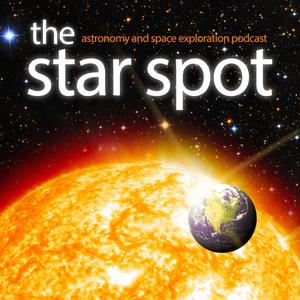
The Star Spot
Justin Trottier
- 41 minutes 51 secondsEpisode 185: Did a Supernova Cause a Mass Extinction?, with Brian Fields
Feature Guest: Brian Fields
By now we are all familiar with the theory that an asteroid brought to an end the age of the dinosaurs, a period of domination that had lasted 167 million years. But asteroids are not the only harbingers of doom that lurk in the darkness of space. Today we’re joined here at The Star Spot by Brian Fields, whose research team has found evidence linking supernovae events in deep space to mass extinction events in deep time.
Current in Space
Tony reports on the mystery of the vanished star. Then Jeff describes electromagnetic flare from a gravitational wave event caused by two merging black holes. And Camilla brings news of two new super-Earths. Finally Amelia and Priyanka offer an explanation for radio waves caused by pulsars.
About Our Guest
Brian Fields is Professor of Astronomy and Physics at the University of Illinois
28 September 2020, 1:00 am - 41 minutes 6 secondsEpisode 184: The Milky Way's First Fast Radio Burst, with Sandro Mereghetti
Feature Guest: Sandro Mereghetti
Fast radio bursts are a new mystery in astronomy. These highly energetic events of unknown origin were first discovered in 2007 out in deep space. Now a team is reporting the first fast radio burst to emanate from our own Milky Way Galaxy. Today we’re joined here at The Star Spot by Sandro Mereghetti, whose team is on the hunt for the source of this unusual phenomenon.
Current in Space
Camilla shares the remarkable discovery, or rather re-discovery, of the heartbeat of a supermassive black hole in a distant galaxy, found still alive and kicking ten years after being first observed. In addition to the supermassive black hole shaping the environment at the centre of our home galaxy, Amelia and Priyanka explain that something else there is also calling the shots (and no, it's definitely not like what we saw in Star Trek V). In other black hole news, Finally, Jeff brings us back down to Earth (though still above Earth), as SpaceX is launching ever more Starlink satellites into orbit to provide high-speed Internet coverage to citizens of our planet. There's only one problem: the future of ground-based astronomy may be at stake.
About Our Guest
Sandro Mereghetti is research staff member at the National Institute for Astrophysics in Milan.
14 September 2020, 1:00 am - 38 minutes 33 secondsEpisode 183: COVID-19 Meets the NASA Space Apps Challenge, with James Slifierz
Feature Guest: James Slifierz
The NASA Space Apps Challenge is a feverish annual hackathon engaging teams of coders, scientists and storytellers around the world. Each year thousands of participants in over 75 countries compete to solve real-world problems in Earth and in space. As the Challenge celebrates its 10 year anniversary it faces one of the most demanding challenges of our generation: COVID-19. To discuss how NASA is turning the global pandemic from a challenge into an opportunity, today we’re joined here at The Star Spot by James Slifierz, Co-founder and CEO of Skywatch and a 2014 NASA Space Apps global winner.
Current in Space
Camille reports on the closest black hole to Earth. Then Jeff announces the Artemis Accords. Anshool shares a new high-resolution infrared image of Jupiter. Finally Amelia and Priyanka describe a planetary system with six planets that orbit in near-perfect rhythm.
About Our Guest
James Slifierz is Co-founder and CEO of Skywatch, a private company with a mission to make earth observation data accessible to developers for a wide variety of applications. He is also responsible for bringing the NASA Space Apps Challenge to Waterloo, Ontario, where each year it proves to be one of the top locations in the world.
25 May 2020, 1:00 am - 40 minutes 21 secondsEpisode 182: Planet Nine or Black Hole One, with Jakub Scholtz
Feature Guest: Jakub Scholtz
We’ve long believed that membership in the solar system’s planetary family was limited to those eight planets we learned about in grade school. But then astronomers began to raise the possibility of a new super-Earth-sized planet, five to ten times the mass of Earth, orbiting far off in the outer solar system. Now if you thought the concept of Planet Nine was astonishing, consider if the mysterious body wasn’t a planet at all - but a black hole. That’s right, Planet Nine might be Black Hole One, our own solar system’s very first singularity. Today we’re joined here at The Star Spot by astrophysicist Jakub Scholtz, co-author of a new study making the case for this fascinating proposal.
Current in Space
Tony celebrates the 30th anniversary of the Hubble Space Telescope. Then Jeff reports on water loss from mysterious interstellar comet Borisov.About Our Guest
Jakub Sholtz is Junior Research Fellow at the Institute for Particle Physics Phenomenology at Durham University in the UK. He earned his PhD at the University of Washington, where he was awarded the Hadley Fellowship, and performed a Postdoctoral Fellowship at Harvard University.
11 May 2020, 1:00 am - 41 minutes 30 secondsEpisode 181: Reports of Betelgeuse’s Death Are Greatly Exaggerated, with Emily Levesque
Feature Guest: Emily Levesque
In December 2019, amateur and professional astronomers held their breath as the red supergiant Betelgeuse started dimming beyond anything on record, a sign the behemoth might be preparing to go supernova. But over the ensuing few months, things seemed to be returning to normal for this fascinating star. To solve the mystery, a team set out to investigate this bizarre behaviour and to shed light on the fate of Betelgeuse. Today we’re joined here at the Star Spot by Emily Levesque to discuss their findings.
Current in Space
A supergiant haul of stories this week. First Camilla reports on the largest ozone hole ever seen over North Pole. Then Jeff shares evidence of an elusive mid-sized black hole. And Anshool brings news of many more satellite galaxies around the Milky Way. Followed by Amelia and Priyanka’s obituary on the passing of astronomer Margaret Burbidge. Finally Joseph updates us on the proposed mission to Enceladus.
About Our Guest
Emily Levesque is Assistant Professor of Astronomy at the University of Washington. Previously she worked as a Post Doc at the University of Colorado, during which she held Einstein and Hubble Fellowships. She is a recipient of the Sloan Fellowship and the Annie Jump Cannon Award. Her work focuses on massive stars and galaxy formation.
27 April 2020, 1:00 am - 51 minutes 18 secondsEpisode 180: Wormholes through Space and Time, with John Cramer
Feature Guest: John G. Cramer
They are the stuff of science fiction, but wormholes are also the subject of intense scientific debate. Can wormholes provide a mechanism for faster than light travel through space and, even more intriguing, do they open the door to travel through time? Today we’re joined here at The Star Spot by one of the world’s foremost authorities on wormholes, Professor John G. Cramer, to share results from his thought experiments on wormholes and his laboratory experiments aimed at changing the past.
Current in Space
Jeff starts us off with a bang... the largest bang we've ever seen in the universe. Then Camilla unveils the name of the next generation Mars rover. And Anshool ponders the chances of finding life around a black hole. Finally Amelia and Priyanka pay tribute to pioneering mathematician Katherine Johnson.About Our Guest
John G Cramer is Professor Emeritus of Physics at the University of Washington. He has made contributions to the Relativistic Heavy Ion Collider project at Brookhaven National Laboratory and the particle accelerator at CERN. He is known for his experiments in quantum retrocausality, which explore the possibility of effects preceding causes. Cramer is a regular guest on the Science Channel and NPR, and he has authored multiple books of hard science fiction.
6 April 2020, 3:06 am - 28 minutes 5 secondsEpisode 179: Dreams of Floating Cities, with Geoffrey Landis
Feature Guest: Geoffrey A. Landis
When we think of terraforming, we probably envision turning the Red Planet blue. But Mars isn’t the only world in our solar system that ambitious scientists have considered transforming. Imagine a network of floating cities in the clouds of Venus, or sailing ships plying the oceans of a newly thawed moon in the outer solar system. Today we’re going to dream here at The Star Spot with NASA scientist and award-winning science fiction author, Geoffrey Landis.
Current in Space
After NASA's InSight lander touched down on Mars in late 2018, it's already gathering fascinating data, but as Camilla explains, its latest discovery is literally groundshaking: Mars is officially a seismically active planet! Then Jeff reports on the launch of Solar Orbiter, a new Sun-exploring spacecraft that will enhance our knowledge of the Sun's influence on the entire Solar System. And while Pluto's heart made us fall in love with the famous dwarf planet all over again, Anshool describes an influence that goes far beyond its aesthetic qualities. Wrapping it up with a special double bill on our local star: The most detailed image so far of the Sun's surface has been captured, and Amelia and Priyanka provide the details.
About Our Guest
Geoffrey A. Landis is a scientist at the NASA John Glenn Research Centre where he works on Mars missions and on developing advanced concepts and technology for future space missions. He has expertise in photovoltaic device design, for which he holds four patents. Landis received bachelors degrees in physics and in electrical engineering from MIT, and a PhD in physics from Brown University. In addition to his pure science work, Landis has published over fifty science fiction short stories, including "Ripples in the Dirac Sea" which won the Nebula award for best short story and "A Walk in the Sun" which won the Hugo award.
2 March 2020, 2:00 am - 42 minutes 44 secondsEpisode 178 Sibling Rivalry at the Centre of the Galaxy, with Smadar Naoz
Feature Guest: Smadar Naoz
We’ve long known that most galaxies contain at their core a supermassive black hole that can be millions of times the mass of the sun. But now researchers are discovering galaxies with more than one supermassive black hole at their centre. To understand the implications of this discovery and what it could mean about the history of the Milky Way, should our own galaxy be among this collection, today we’re joined here at The Star Spot by astrophysicist Smadar Naoz.
Current in Space
Stars like the Sun are a no-brainer when it comes to finding habitable planets, but Amelia and Priyanka say another star is even better; say hello to the orange dwarf. In other habitable planet news, Jeff reports on the discovery of two super-Earth exoplanets that just may be home to life. Finally, Anshool looks to the ancient history of our own planet with the finding of the oldest known asteroid impact, one which may have marked a major climate shift.
About Our Guest
Smadar Naoz is Howard and Astrid Preston Term Chair in Astrophysics and Associate Professor of Physics and Astronomy at UCLA. She is a member of the executive committee of the Bhaumik Institute for Theoretical Physics. She received her PhD from Tel Aviv University before working as an Einstein Fellow at Harvard University.
3 February 2020, 2:00 am - 33 minutes 56 secondsEpisode 177: The Case of the Missing Dark Matter, with Guo Chi
Feature Guest: Guo Qi
Dark matter vastly overshadows ordinary matter in our universe. Wherever astronomers turn their telescopes they find galaxies dominated by dark matter. But all that changed recently with the first discoveries of dwarf galaxies suspiciously deficient in dark matter. To make sense of this baffling finding and how it relates to our Milky Way’s own local dwarf galaxies, today we’re joined here at The Star Spot by study lead Professor Guo Qi from the Chinese Academy of Science.
Current in Space
NASA's newest planet hunter has made its most remarkable discovery yet: an Earth-sized world in its star's habitable zone, and Anshool provides everything you need to know. Amelia and Priyanka explain a mystery surrounding a particle, and a strange halo around a pulsar may be the key to solving it. And in his debut, Jeff offers more pulsar news in that a new surface map of a particular pulsar may question everything we thought we knew about these lighthouses of the Galaxy.
About Our Guest
Guo Qi is Professor of Astronomy at the National Astronomical Observatories of the Chinese Academy of Science. She received her PhD from the Max-Planck Institute for Astrophysics and held a Postdoctoral Fellowship at the UK’s Durham University.
20 January 2020, 2:00 am - 43 minutes 54 secondsEpisode 176: Second Genesis, with Jay Melosh
Feature Guest: Jay Melosh
If we should find creatures crawling around Titan or swimming under the ice sheets of Europa or Enceladus, they will almost certainly turn out to be the result of a second genesis, those creatures truly alien in the most profound sense. That startling conclusion follows from a series of groundbreaking simulation that found it exceedingly unlikely that life can be successfully transferred between the worlds of our solar system. To unpack the significance of this conclusion, today we’re joined here at The Star Spot by geophysicist Jay Melosh, who caused an uproar when he presented his findings at a recent meeting of the American Geophysical Union.
Current in Space
Tony does triple duty. He opens with his own 2019 retrospective, featuring a review of some of the impressive achievements made in space science, and to expect more of the same in 2020. Then he and Joseph excite with possible exploration methods for two ocean worlds in the outer Solar System. And for those of you who missed the spectacular "ring of fire" solar eclipse in the eastern hemisphere, Tony and Anshool have you covered, with a review of places impacted, and a preview of similar events in the near future.About Our Guest
Jay Melosh is University Distinguished Professor of Earth and Atmospheric Science at Purdue University. He is the recipient of the Leon Blitzer Teaching Award, the Hess Medal of the American Geophysical Union, and the Humboldt Prize Fellowship, among many other honours.
6 January 2020, 2:00 am - 41 minutes 46 secondsEpisode 175: The Truth is Out There (at the University of Manitoba)
Feature Guest: Shelley Sweeney
The University of Manitoba has just acquired the largest collection of UFO related material. Prominent Canadian ufologist Christ Rutkowski has made a donation of over 30,000 documents, photos, artifacts and government reports, including files relating to the famous 1967 Falcon Lake Incident, involving a purported physical contact with a mysterious craft. Whether you’re intrigued by the phenomenon of belief or you believe in the phenomenon, the extraordinary human effort to address the UFO question is worth our attention, argues Shelley Sweeney, Head of Archives & Special Collections at the University of Manitoba, who joins us here at The Star Spot.
Current in Space
In her final broadcast, Dunja literally goes out with a bang as bizarre eruptions of particles have been seen on the asteroid Bennu by orbiting spacecraft OSIRIS-REx. Then Joseph looks back at our own planet, with a remarkable discovery: a new map of Antarctica that could forecast the future impact of climate change. In his debut, Anshool describes a star careening through space, shot out by the supermassive black hole at the center of the Milky Way! In other supermassive black hole news, Amelia and Priyanka share a finding that shall surely change the way we understand how huge galaxies form: a galaxy with three supermassive black holes! Finally Tony breaks down two new images of the first interstellar comet ever observed by humanity!
About Our Guest
Shelley Sweeney is Head of Archives & Special Collections at the University of Manitoba. She is a former Secretary of the international Academy of Certified Archivists and co-authored the code of ethics for the Canadian archival profession.
23 December 2019, 2:00 am - More Episodes? Get the App
Your feedback is valuable to us. Should you encounter any bugs, glitches, lack of functionality or other problems, please email us on [email protected] or join Moon.FM Telegram Group where you can talk directly to the dev team who are happy to answer any queries.
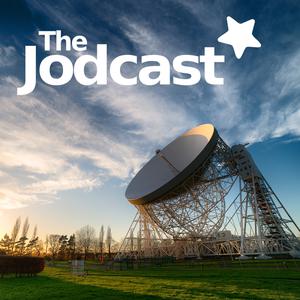 The Jodcast - astronomy podcast
The Jodcast - astronomy podcast
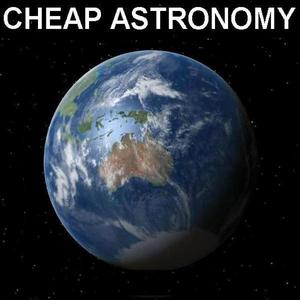 Cheap Astronomy Podcasts
Cheap Astronomy Podcasts
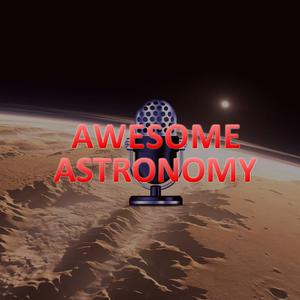 AWESOME ASTRONOMY
AWESOME ASTRONOMY
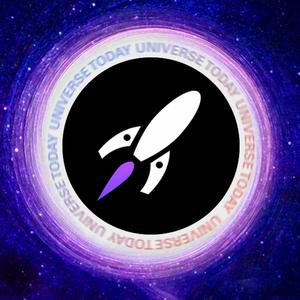 Universe Today Podcast
Universe Today Podcast
 Weekly Space Hangout Audio
Weekly Space Hangout Audio
 Ask a Spaceman!
Ask a Spaceman!